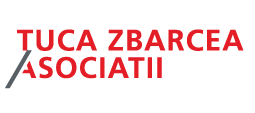How else could one explain the astonishing surge in foreign direct investment (FDI) filings in Romania in 2024?
According to the latest report just published by the Romanian Competition Council, a record number of 104 merger control files were authorized. Quite encouraging is the fact that 86% of these followed the simplified procedure, a clear sign of the authority’s openness to streamlining the process wherever possible.
Still, this record pales in comparison to the number of FDI screenings completed: 471 in total, out of which 159 resulted in a decision. That alone represents a 40% increase compared to 2023 - to say nothing of the many uncounted informal cases where parties sought clarifications from the authority without formally notifying the investment.
The numbers speak louder than any policy paper: in short, for every classical merger cleared, more than four FDI screenings were completed. A new procedural heavyweight has emerged, and it appears to enjoy the spotlight.
Why the FDI boom? Lower thresholds and broad scope
One possible explanation for the spectacular surge lies in the still confusing ambit of the FDI legislation in Romania. As a reminder, investments subject to screening are those exceeding EUR 2,000,000 - or even less, if they “may have an impact on or present a risk to public security or public order” - and also (and this is the tricky part) those falling within strategic sectors.
Two points stand out here:
- The monetary threshold for FDI screening is already lower than that applied in classical merger control cases.
- The definition of what constitutes a strategic sector remains, despite persistent requests from the business environment, remarkably broad and catch-all in nature.
The recent surge in FDI filings is not just a matter of statistics. It reflects the real use of new legal instruments in the name of national interest and economic security. The regime is here to stay, and it’s evolving fast.
Necessary actions for investors and legal teams
- Further guidance and legislative changes
The Romanian Competition Council has already published draft guidelines aimed at bringing much-needed clarity to key aspects of the FDI screening process. These include:
- how investment value is determined
- procedural aspects such as timelines and required documentation
(for example, the draft clarifies that filing is permitted based on a preliminary agreement, as long as it clearly demonstrates the parties’ intent to carry out the investment) - the notion of control
Still, several grey areas remain. The treatment of financing agreements continues to raise questions - as do internal restructurings. Whether through the long-discussed White Paper or a new CSAT decision, further clarification is urgently needed, particularly regarding exempt transactions and the precise definition of strategic sectors.
Another potential solution would be to raise the EUR 2 million threshold that triggers the obligation to notify the investment. One possible benchmark would be to align it with the minimum threshold under merger control rules - currently EUR 4 million.
- Streamlining of the review process
It should be stressed that FDI screening and merger control are not fully comparable exercises. Each follows its own rationale, with distinct procedural and substantive particularities.
Nonetheless, in practice, the two reviews often run in parallel and are finalized together - a coordination which, despite genuine efforts by the authority to reduce examination times, still leads in some cases to bottlenecks and notable delays.
This dual-track clearance has tangible consequences, particularly in more complex transactions, where timing is critical. The average duration for obtaining merger clearance in 2024 was around 60 days. Any steps that further streamline internal workflows, reduce redundancies and provide more transparency on review timelines would be more than welcome.
- Investment planning: start early and strategically
In this context, companies are strongly advised to factor FDI screening into their deal planning from an early stage. This means not only anticipating the need for authorization but also allowing sufficient time in transaction calendars for the parallel handling of FDI and merger control procedures.
Particular care should be taken when dealing with traditionally sensitive sectors or complex ownership structures - but even seemingly straightforward deals may be affected in the current context.
In certain cases, delays in obtaining clearance may impact contractual milestones or financing arrangements. Early risk mapping and proactive engagement with your lawyer can prove critical to keeping the transaction on a streamlined track.
Conclusion: staying ahead of Romania’s evolving FDI framework
FDI screening in Romania has grown from a niche compliance topic to a core regulatory consideration for most strategic transactions. Its rise in 2024 - both in volume and complexity - shows no sign of slowing.
By Andrei Petre, Counsel, Act Legal




